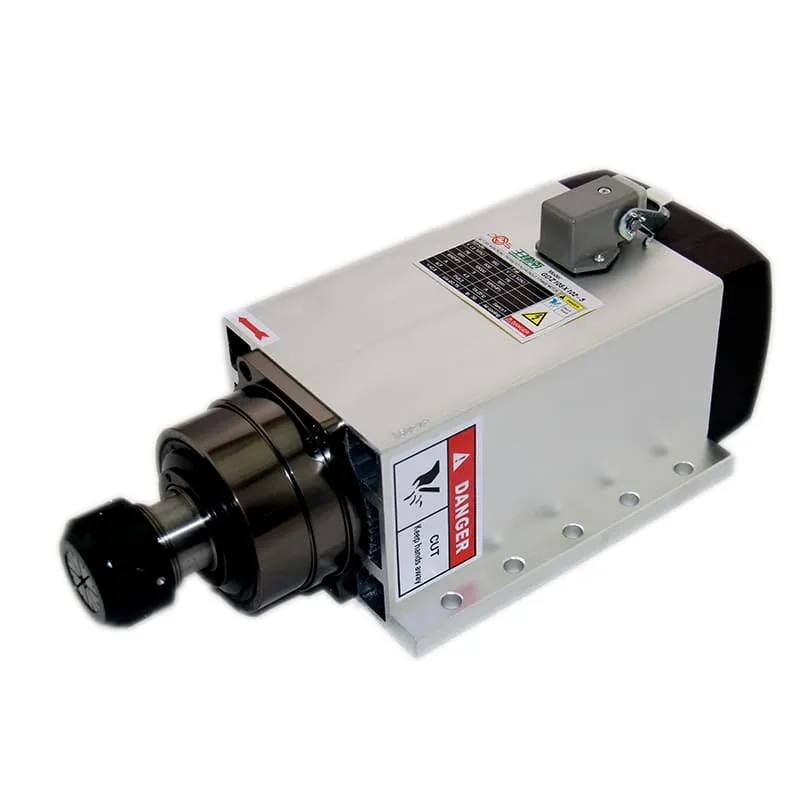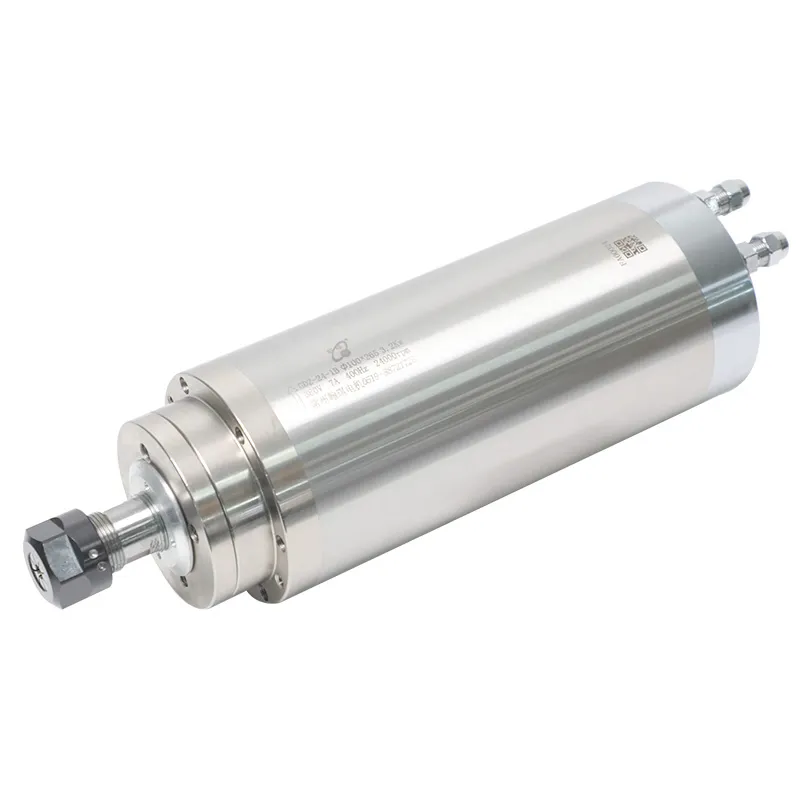CNC cutting is a highly precise process that uses Computer Numerical Control (CNC) machines to cut a wide variety of materials. This technology is an integral part of modern manufacturing, enabling the creation of intricate parts and components with excellent accuracy. CNC cutting involves different tools such as routers, laser cutters, and plasma cutters, which are controlled by a computer program to execute detailed cutting patterns and designs. But what exactly makes CNC cutting unique, and why is it so widely adopted across industries? Let’s dive in and explore.
Understanding CNC Cutting and Its Importance
CNC cutting stands for “Computer Numerical Control” cutting, a process that relies on pre-programmed computer software to control tools and machinery. The key to its popularity lies in its ability to produce parts with very tight tolerances, which makes it indispensable in industries ranging from aerospace to furniture production.
Key Features of CNC Cutting
- Precision: CNC cutting machines offer unparalleled precision, allowing manufacturers to create parts with exact measurements repeatedly.
- Versatility: CNC cutting can be applied to a wide range of materials, including metal, wood, plastics, and even glass.
- Automation: The automated nature of CNC means less manual labor is involved, which minimizes human error and maximizes efficiency.
- Consistency: Since the process is automated, every product cut by a CNC machine is identical, ensuring consistency throughout a production batch.
These features are the reason CNC cutting is so widely used for various applications—from intricate furniture pieces to robust automotive parts. Whether you are crafting precision parts or creating aesthetically appealing pieces, CNC cutting plays a crucial role.

Image Credit: 2.2KW ER20 Air-Cooled Spindle
Types of CNC Cutting Machines
CNC cutting can involve various types of machines, each suited for specific tasks and materials. Let’s examine some of the most common CNC cutting machines.
1. CNC Router
A CNC router is a versatile cutting machine used primarily for woodworking, but it can also cut through other materials such as aluminum, plastic, and composites. CNC routers are ideal for creating intricate patterns and are popular in furniture making.
- Materials Used: Wood, plastic, aluminum, MDF
- Common Uses: Carving, drilling, milling, creating detailed designs in furniture
2. Laser Cutter
A laser cutter uses a high-powered laser to cut materials. It is particularly useful for making highly detailed cuts and engravings. CNC laser cutters can achieve exceptionally intricate cuts, which makes them popular for engraving, cutting acrylic, and sign making.
- Materials Used: Acrylic, wood, metal, textiles
- Precision Level: Extremely high; often used for detailed work
3. Plasma Cutter
Plasma cutting is a process used to cut conductive materials, such as steel and copper, using an accelerated jet of hot plasma. It is perfect for cutting thicker metal sheets where precision is still a requirement.
- Materials Used: Steel, copper, brass
- Common Uses: Cutting large metal sheets for automotive, aerospace, and industrial purposes
4. Waterjet Cutter
A waterjet cutter uses a high-pressure jet of water, sometimes mixed with an abrasive substance, to cut materials. This method is advantageous because it does not generate heat, making it perfect for materials that can be damaged by heat.
- Materials Used: Stone, metals, glass, rubber
- Heat Affected Zone: None; makes it ideal for temperature-sensitive materials
CNC Cutting vs. Traditional Cutting Techniques
The main difference between CNC cutting and traditional cutting is automation and precision. Traditional cutting methods often require manual operation, which can lead to inconsistencies, especially when working with complex shapes or high volumes.
| Feature | CNC Cutting | Traditional Cutting |
|---|---|---|
| Precision | Extremely High | Moderate to Low |
| Labor Requirement | Low (automated) | High (manual) |
| Material Range | Wide (metal, wood, glass) | Varies, generally more limited |
| Repeatability | High | Low to Medium |
| Complexity Handling | High | Low to Moderate |
These advantages make CNC cutting a go-to method for modern manufacturers looking to enhance their productivity while reducing errors.
Materials Commonly Used in CNC Cutting
One of the greatest strengths of CNC cutting is its adaptability to different materials. Below is a summary of commonly used materials and how CNC machines handle them:
1. Metals
- Steel: Steel is often used in manufacturing for parts that need strength and durability. CNC plasma and laser cutters are typically employed.
- Aluminum: CNC routers and laser cutters can cut aluminum efficiently. This lightweight material is widely used in automotive and aerospace sectors.
2. Woods
- Hardwood and Softwood: CNC routers are great for cutting different types of wood, allowing for detailed carvings and patterns.
- MDF (Medium-Density Fiberboard): CNC routers can handle MDF very effectively, making it ideal for furniture and cabinet production.
3. Plastics and Composites
- Acrylic: Laser cutters are commonly used for cutting acrylic, which is popular for making signs and display cases.
- Carbon Fiber: CNC cutting is used in manufacturing lightweight and strong components, particularly for aerospace.

Image Credit: 24000RPM 1.5KW ER11 Water-Cooled Spindle
Applications of CNC Cutting in Different Industries
CNC cutting has widespread applications in various industries. Let’s explore a few key areas where CNC cutting plays a significant role.
1. Aerospace Industry
In the aerospace sector, the need for accuracy and reliability is paramount. CNC cutting machines are used to manufacture parts like wing panels, turbine blades, and structural components. CNC ensures that these critical parts are made to exacting standards, reducing the risk of malfunction.
2. Automotive Industry
CNC cutting is extensively used in the automotive industry to produce components like engine blocks, chassis parts, and gear mechanisms. The ability to cut complex shapes with high precision allows manufacturers to produce parts that improve vehicle performance.
3. Furniture and Cabinet Making
In the furniture industry, CNC routers are used to make intricate designs, cabinet doors, and decorative elements. The accuracy of CNC cutting is invaluable when creating pieces that must fit together seamlessly.
4. Sign and Display Manufacturing
CNC laser cutters are a favorite for producing high-quality signs and displays. They are used to cut acrylic, wood, and metal with detailed designs and crisp edges, making them ideal for marketing and branding purposes.
Benefits of CNC Cutting for Manufacturers
CNC cutting offers several benefits that traditional methods simply cannot match:
- Efficiency: Automated CNC systems allow for faster production times while maintaining accuracy.
- Less Material Waste: With its precision, CNC cutting reduces material wastage, which is both environmentally friendly and cost-effective.
- Scalability: CNC cutting is ideal for scaling production because the program used to control the machines can be reused, ensuring consistency across large production runs.
- Reduced Labor Cost: Since CNC cutting is highly automated, it requires less manual intervention, thus reducing labor costs significantly.

Image Credit: 24000RPM 3.2KW ER20 Water-Cooled Spindle
Common Challenges with CNC Cutting
While CNC cutting is a powerful technology, it does come with challenges that manufacturers need to address:
- Cost of Equipment: CNC machines, especially advanced models like laser or waterjet cutters, can be costly to purchase and maintain.
- Skill Requirement: Operating CNC machinery requires specialized training, particularly in understanding G-code and other programming languages.
- Tool Wear and Tear: CNC machines use tools that are subject to wear over time, especially when cutting harder materials. Regular maintenance is crucial to ensure performance.
How to Choose the Right CNC Cutting Tool for Your Needs
Choosing the right CNC cutting tool involves considering several factors:
- Material Type: Different materials require different cutting tools—laser for delicate work, plasma for thick metals, etc.
- Required Precision: If your project requires high precision, a laser cutter or waterjet may be the best choice.
- Production Volume: High production volumes may necessitate more robust and automated CNC machines that can operate continuously with minimal downtime.
FAQs
1. What materials can be cut with CNC machines?
CNC machines can cut a wide variety of materials, including metals (like steel and aluminum), wood, plastics, glass, and composites. The type of material often determines the type of CNC cutter used.
2. Is CNC cutting suitable for small businesses?
Yes, CNC cutting is suitable for small businesses, particularly those involved in custom fabrication, furniture making, and sign production. It provides high precision and scalability, making it a valuable asset even for small-scale operations.
3. What are the advantages of CNC cutting over manual cutting?
The key advantages of CNC cutting over manual cutting include higher precision, consistency, scalability, and reduced labor requirements. CNC cutting is also faster and allows for more complex designs compared to manual methods.
4. Which industries benefit the most from CNC cutting?
Industries that benefit most from CNC cutting include aerospace, automotive, furniture manufacturing, and sign making. These industries require high levels of precision, scalability, and repeatability, all of which CNC cutting provides.
5. What kind of CNC machine is best for metal cutting?
For cutting metal, plasma cutters and laser cutters are the most effective CNC machines. Waterjet cutters are also used when heat may affect the quality of the metal.
Conclusion
CNC cutting is a powerful and versatile technology that plays an integral role in the manufacturing industry. It offers unmatched precision, efficiency, and flexibility, making it suitable for producing everything from delicate engravings to heavy-duty components. By understanding the different types of CNC machines and their applications, manufacturers can make informed decisions that will enhance their production capabilities, minimize waste, and ensure consistent quality. If you are interested in exploring CNC spindle products and related technologies, check out spindlemotorshop.com for detailed guides and a wide range of tools to suit your CNC cutting needs.

